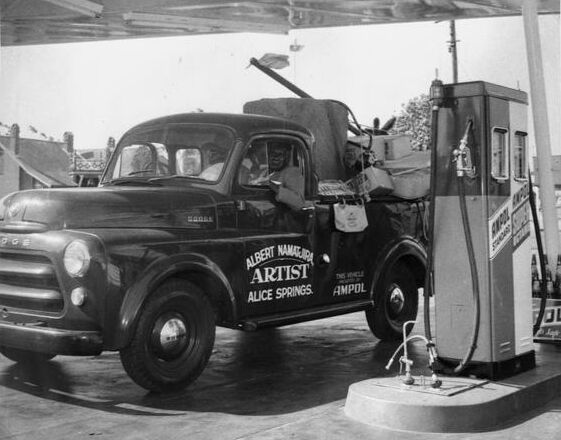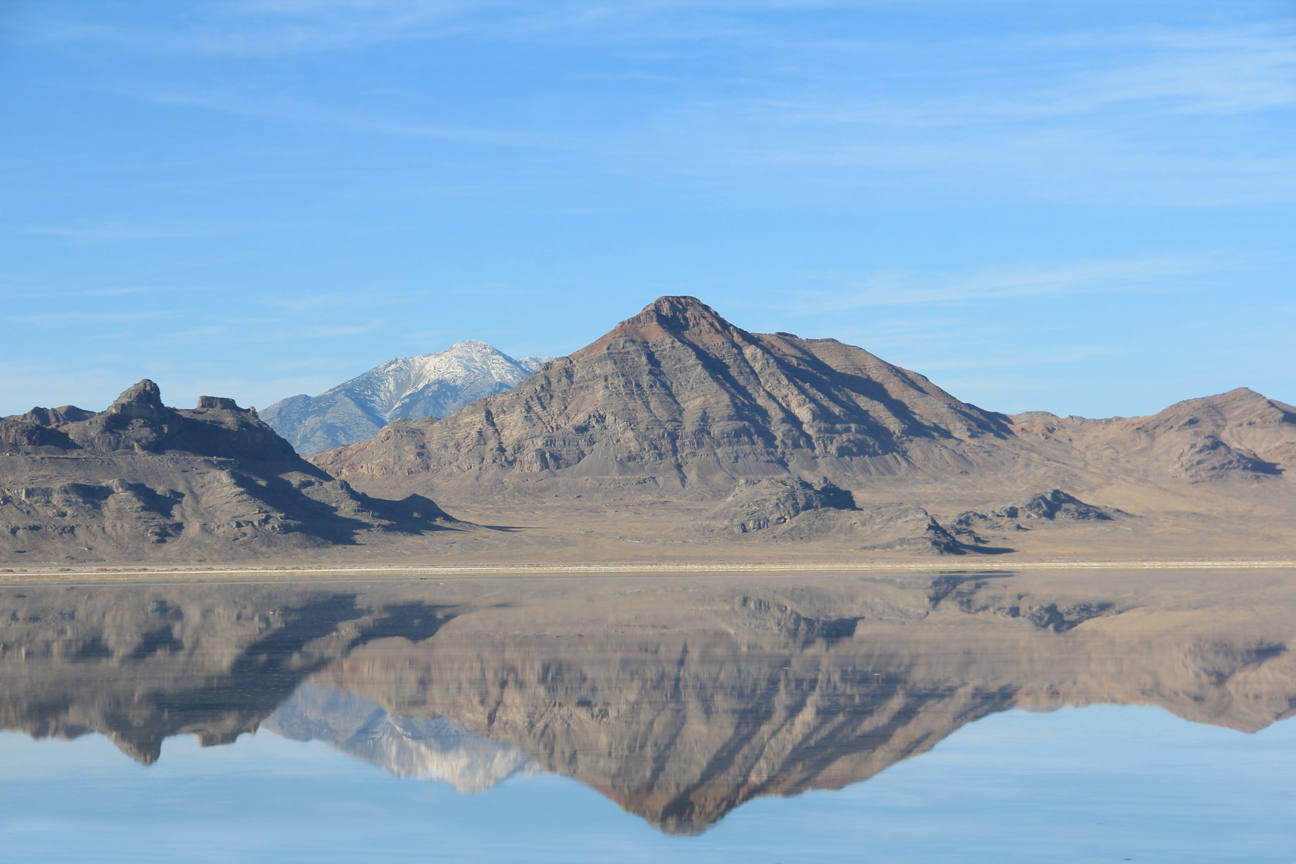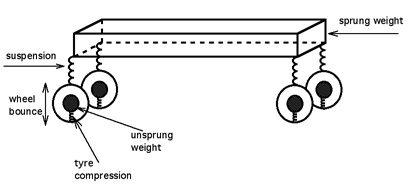|
Bluebird CN7
The Bluebird-Proteus CN7 is a gas turbine-powered vehicle that was driven by Donald Campbell and achieved the world land speed record on Lake Eyre in Australia on 17 July 1964. The vehicle set the FIA world record for the flying mile at . Design and construction In 1956, Campbell began planning a car to break the land speed record, which then stood at set by John Cobb in the Railton Mobil Special. The Norris brothers, who had designed Campbell's highly successful Bluebird K7 hydroplane, designed Bluebird-Proteus CN7 with in mind. The CN7 (Campbell–Norris 7) was constructed by Motor Panels in Coventry, supervised by Donald Stevens of Norris Bros & Maurice Britton of Motor Panels with Ken and Lew Norris as co-chief designers and was completed by the spring of 1960. Bluebird CN7 was the first land speed record vehicle to be powered by a gas turbine engine. The Bristol-Siddeley Proteus was the Bristol Aeroplane Company's first successful gas turbine engine design, and de ... [...More Info...] [...Related Items...] OR: [Wikipedia] [Google] [Baidu] |
Motor Panels
Rubery Owen is a British engineering company which was founded in 1884 in Darlaston, West Midlands. History In 1884 the company was started by John Tunner Rubery (1849-1920) and his two brothers (Samuel 1844-1910 and Thomas William 1856-1925), as an ironworks manufacturing gates and fences. In 1893 trained engineer Alfred Ernest Owen joined John Rubery, replacing his two brothers, and in 1903 the company name of ''Rubery Owen'' was established. When John Rubery retired in 1910, the partnership was bought out by Owen and by 1912 the company had expanded into aviation engineering, motor frames and roofing, in addition to fencing manufacture. The company expanded during the 1920s and 1930s to include the production of metal airframes, metal storage equipment, steel pulleys and armour plate. They also acquired a Warrington hydraulic company Conveyancer Fork Trucks Ltd which became Rubery Owen Conveyancer, and which claims to have launched the UK's first forklift truck in 1946. D ... [...More Info...] [...Related Items...] OR: [Wikipedia] [Google] [Baidu] |
Bristol Aeroplane Company
The Bristol Aeroplane Company, originally the British and Colonial Aeroplane Company, was both one of the first and one of the most important British aviation companies, designing and manufacturing both airframes and aircraft engines. Notable aircraft produced by the company include the 'Boxkite', the Bristol Fighter, the Bulldog, the Blenheim, the Beaufighter, and the Britannia, and much of the preliminary work which led to Concorde was carried out by the company. In 1956 its major operations were split into Bristol Aircraft and Bristol Aero Engines. In 1959, Bristol Aircraft merged with several major British aircraft companies to form the British Aircraft Corporation (BAC) and Bristol Aero Engines merged with Armstrong Siddeley to form Bristol Siddeley. BAC went on to become a founding component of the nationalised British Aerospace, now BAE Systems. Bristol Siddeley was purchased by Rolls-Royce in 1966, who continued to develop and market Bristol-designed engines. The ... [...More Info...] [...Related Items...] OR: [Wikipedia] [Google] [Baidu] |
John Pearson (author)
John George Pearson (5 October 1930 – 13 November 2021) was an English novelist and an author of biographies, notably of Ian Fleming (the creator of James Bond), of the Sitwells, and of the Kray twins. Life and career Pearson was born in Epsom, Surrey. He was educated at King's College School, Wimbledon, and Peterhouse, Cambridge, where he gained a double first in history. He then worked for ''The Economist'', BBC Television and ''The Sunday Times''. He was Ian Fleming's assistant at the ''Sunday Times'' and went on to write the first biography of Fleming, ''The Life of Ian Fleming'', published in 1966. Pearson was commissioned by Donald Campbell to chronicle his successful attempt on the Land Speed Record in 1964 in Bluebird CN7, resulting in the book ''Bluebird and the Dead Lake''. Pearson had also written "true crime" biographies, such as ''The Profession of Violence'', an account of the rise and fall of the Kray twins, who had hired him to write their biography in 1 ... [...More Info...] [...Related Items...] OR: [Wikipedia] [Google] [Baidu] |
Ampol
Ampol Limited is an Australian petroleum company headquartered in Sydney, New South Wales. Ampol is the largest transport energy distributor and retailer in Australia, with more than 1,900 Ampol-branded stations across the country . It also operates in New Zealand through its subsidiary Z Energy. Ampol was first incorporated in 1936 and would later be owned by Pioneer International. The Caltex brand in Australia separately began in 1941 to market petrol in its chain of service stations and was owned by Caltex Australia Limited. In 1995, the Ampol and Caltex operations merged to form Australian Petroleum, equally owned by Pioneer and Caltex Australia. Pioneer sold its shareholding between 1997 and 1998, and Caltex Australia gained full ownership of Australian Petroleum. Caltex Australia then gradually replaced the Ampol brand with Caltex over the next decade. From 2001 until 2015, Caltex Australia was owned equally by American petroleum company Chevron Corporation and the Au ... [...More Info...] [...Related Items...] OR: [Wikipedia] [Google] [Baidu] |
Bonneville Salt Flats
The Bonneville Salt Flats are a densely packed salt pan in Tooele County in northwestern Utah. A remnant of the Pleistocene Lake Bonneville, it is the largest of many salt flats west of the Great Salt Lake. It is public land managed by the Bureau of Land Management and is known for land speed records at the Bonneville Speedway. Access to the Flats is open to the public. The Flats are about 12 miles (19 km) long and 5 miles (8 km) wide, with a crust almost 5 ft (1.5m) thick at the center and less than one inch (2.5 cm) towards the edges. It is estimated to hold 147 million tons of salt, approximately 90% of which is common table salt. History Geologist Grove Karl Gilbert named the area after Benjamin Bonneville, a U.S. Army officer who explored the Intermountain West in the 1830s. In 1907, Bill Rishel and two local businessmen tested the suitability of the salt for driving by taking a Pierce-Arrow onto its surface. A railway line across the Flats was completed in 1910, ... [...More Info...] [...Related Items...] OR: [Wikipedia] [Google] [Baidu] |
Goodwood Circuit
Goodwood Circuit is a historic venue for both two- and four-wheeled motorsport in the United Kingdom. The circuit is situated near Chichester, West Sussex, close to the south coast of England, on the estate of Goodwood House, and completely encircles Chichester/Goodwood Airport. This is the racing circuit dating from 1948, not to be confused with the separate hillclimb course located at Goodwood House and first used in 1936. History 1948–1966 The racing circuit began life as the perimeter track of RAF Westhampnett airfield, which was constructed during World War II as a relief airfield for RAF Tangmere. The first race meeting took place on 18 September 1948, organised by the Junior Car Club and sanctioned by the Duke of Richmond and Gordon. The winner of the first race was P. de F. C. Pycroft, in his 2,664 c.c. Pycroft-Jaguar, at . Stirling Moss won the 500cc race (later to become Formula 3), followed by Eric Brandon and "Curly" Dryden, all in Coopers. Goodwood bec ... [...More Info...] [...Related Items...] OR: [Wikipedia] [Google] [Baidu] |
Air Brake (aeronautics)
In aeronautics, air brakes or speed brakes are a type of flight control surface used on an aircraft to increase the drag on the aircraft. Air brakes differ from spoilers in that air brakes are designed to increase drag while making little change to lift, whereas spoilers reduce the lift-to-drag ratio and require a higher angle of attack to maintain lift, resulting in a higher stall speed. Introduction An air brake is a part of an aircraft. When extended into the airstream, it causes an increase in the drag on the aircraft. When not in use, it conforms to the local streamlined profile of the aircraft in order to help minimise the drag. History In the early decades of powered flight, air brakes were flaps mounted on the wings. They were manually controlled by a lever in the cockpit, and mechanical linkages to the air brake. An early type of air brake, developed in 1931, was fitted to the aircraft wing support struts. In 1936, Hans Jacobs, who headed Nazi Germany's ' ... [...More Info...] [...Related Items...] OR: [Wikipedia] [Google] [Baidu] |
Unsprung Mass
The unsprung mass (colloquially unsprung weight) of a vehicle is the mass of the suspension, wheels or tracks (as applicable), and other components directly connected to them. This contrasts with the sprung mass (or weight) supported by the suspension, which includes the body and other components within or attached to it. Components of the unsprung mass include the wheel axles, wheel bearings, wheel hubs, tires, and a portion of the weight of driveshafts, springs, shock absorbers, and suspension links. Brakes that are mounted inboard (i.e. as on the drive shaft, and not part of the wheel or its hub) are part of a vehicle's sprung mass. Effects The unsprung mass of a typical wheel/tire combination represents a trade-off between the pair's bump-absorbing/road-tracking ability and vibration isolation. Bumps and surface imperfections in the road cause tire compression, inducing a force on the unsprung mass. The unsprung mass then reacts to this force with movement of it ... [...More Info...] [...Related Items...] OR: [Wikipedia] [Google] [Baidu] |
Inboard Brake
An inboard brake is an automobile technology wherein the disc brakes are mounted on the chassis of the vehicle, rather than directly on the wheel hubs. Its main advantages are twofold: a reduction in the unsprung weight of the wheel hubs, as this no longer includes the brake discs and calipers; and braking torque is applied directly to the chassis, rather than being transferred to it through the suspension arms. Description Inboard brakes are fitted to a driven axle of the car, as they require a drive shaft to link the wheel to the brake. Most have thus been used for rear-wheel drive cars, although four-wheel drive and some front-wheel drives have also used them. A rare few rear wheel drive racing cars (e.g., the Lotus 72) have also used inboard front discs, accepting the need to provide a front brake shaft to gain the overall unsprung weight and braking torque advantages. Inboard brakes for early racing cars have rarely used drum brakes, although nearly all inboard brakes date ... [...More Info...] [...Related Items...] OR: [Wikipedia] [Google] [Baidu] |
Lucas Industries
Lucas Industries plc was a Birmingham-based British manufacturer of motor industry and aerospace industry components. Once prominent, it was listed on the London Stock Exchange and was formerly a constituent of the FTSE 100 Index. In August 1996, Lucas merged with the American Varity Corporation to form LucasVarity. After LucasVarity was sold to TRW the Lucas brand name was licensed for its brand equity to Elta Lighting for aftermarket auto parts in the United Kingdom. The Lucas trademark is currently owned by ZF Friedrichshafen, which retained the Elta arrangement. History Foundation In the 1850s, Joseph Lucas, a jobless father of six, sold paraffin oil from a barrow cart around the streets of Hockley. In 1860, he founded the firm that would become Lucas Industries. His 17-year-old son Harry joined the firm around 1872. [...More Info...] [...Related Items...] OR: [Wikipedia] [Google] [Baidu] |
Drag Area
In mechanics and aerodynamics, the drag area of an object represents the effective size of the object as it is "seen" by the fluid flow around it. The drag area is usually expressed as a product C_d A, where A is a representative area of the object, and C_d is the drag coefficient, which represents what shape it has and how streamlined it is. The drag coefficient plays a role in Reynold's drag equation, :F_d=\frac\ \rho\ C_d A\ v^2. Here, F_d is the drag force, \rho the density of the fluid, and v the speed of the object relative to the fluid. See also * Drag (physics) * Automobile drag coefficient#Drag area *Zero-lift drag coefficient In aerodynamics, the zero-lift drag coefficient C_ is a dimensionless parameter which relates an aircraft's zero-lift drag force to its size, speed, and flying altitude. Mathematically, zero-lift drag coefficient is defined as C_ = C_D - C_, wher ... Drag (physics) {{Fluiddynamics-stub ... [...More Info...] [...Related Items...] OR: [Wikipedia] [Google] [Baidu] |
Dunlop Rubber
Dunlop Ltd. (formerly Dunlop Rubber) was a British multinational company involved in the manufacture of various natural rubber goods. Its business was founded in 1889 by Harvey du Cros and he involved John Boyd Dunlop who had re-invented and developed the first pneumatic tyre. It was one of the first multinationals, and under du Cros and, after him, under Eric Geddes, grew to be one of the largest British industrial companies. J B Dunlop had dropped any ties to it well before his name was used for any part of the business. The business and manufactory was founded in Upper Stephens Street in Dublin. A plaque marks the site, which is now part of the head office of the Irish multinational departments store brand, Dunnes Stores. Dunlop Rubber failed to adapt to evolving market conditions in the 1970s, despite having recognised by the mid-1960s the potential drop in demand as the more durable radial tyres swept through the market. After taking on excessive debt Dunlop was acquire ... [...More Info...] [...Related Items...] OR: [Wikipedia] [Google] [Baidu] |








